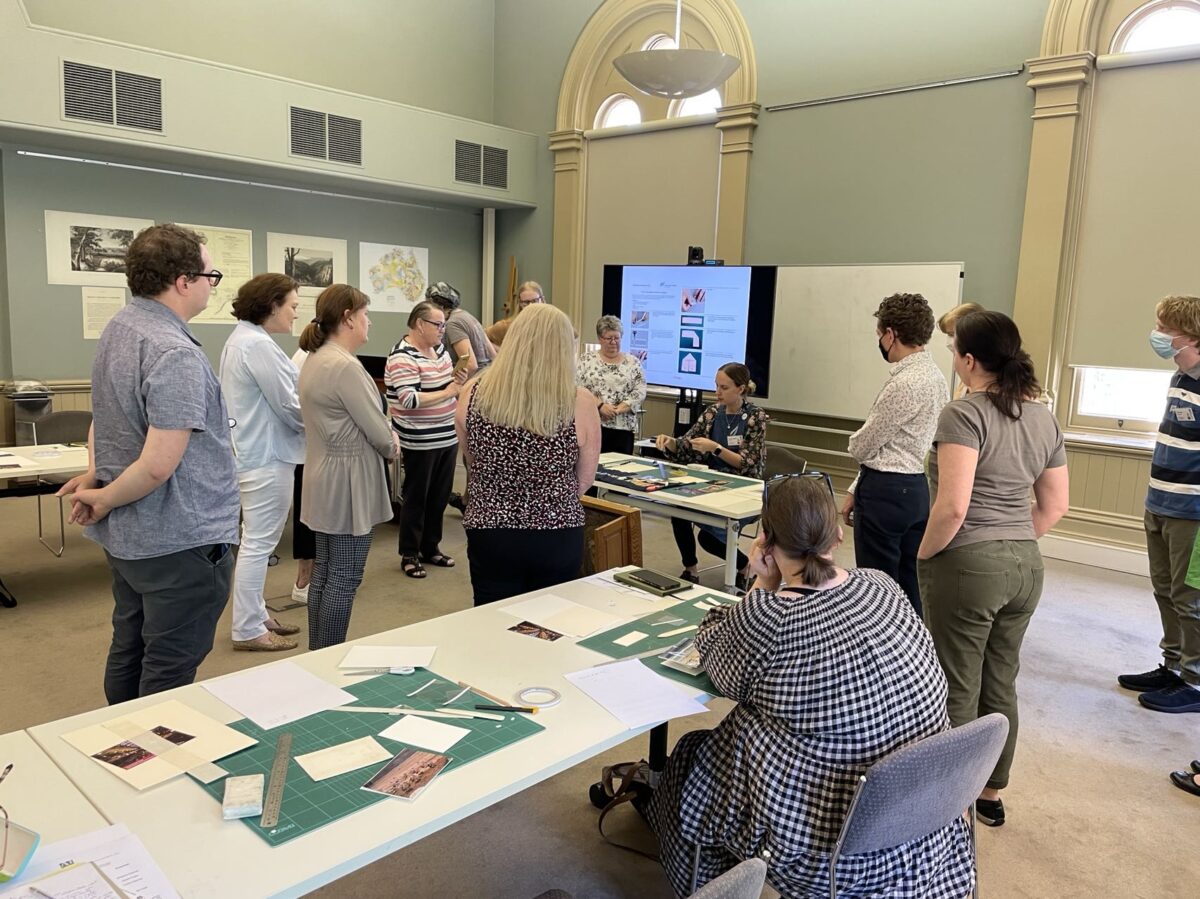On 25 November 2022, a workshop dedicated to non-conservators was hosted at the Jervois Room at the State Library of South Australia by conservators from Artlab Australia. The workshop was a part of the AICCM Exhibitions SIG symposium ‘Exhibitions: Inclusive and Sustainable Practice’. The day consisted of a presentation on the preventive care of collections and a hands-on workshop on the following basic mount-making techniques:
- non-invasive, using Japanese repair paper, Mylar, and polyethylene strips to create different types of photograph corners
- customised book cradle.
The day started with a presentation on preventive conservation principles by Stuart Fuller. Most of the participants came from cultural institutions or private practice, with representation from organisations like the National Archives of Australia, the National Railway Museum, and CALHN Health Museum as well as a local printmaker. The Q&A session consisted of very specific questions on how to preserve attendees’ collection materials ranging from storage light source and corrosion situation to digitisation processes.

Roberto Padoan welcomes the participants.

Stuart Fuller shows the audience some common equipment used for environmental monitoring.
Following the morning’s first session was a practical session hosted by paper conservator Laura Daenke. Laura first introduced the techniques that would be covered (preparing photo corners for mat mounting) and the reason why these were chosen for non-conservators. As the introduction of adhesives always presents risks (which conservators are equipped to mitigate), the non-invasive techniques demonstrated ensure secure mounting of artworks in the housing mat while also preventing damage from using tapes or other adhesives directly on the work (paper conservators can relate to the pain of removing tape!). Laura broke each technique into small sections where she would demonstrate one or two steps and ask participants to practise and then gather back for the following step three and four. In this way, it ensured everyone was at a similar speed. As a result, common feedback was that the workshop was appropriately scheduled and easy to follow.

Laura Daenke demonstrated creating photo corners using Mylar.

All the materials and tools were prepared beforehand to ensure smooth transition between each practice.
In the afternoon, Andrew Cuch (conservation officer from Artlab Australia) presented a demonstration on creating a book cradle. Andrew presented an overview of the common designs of book cradles used to exhibit a book’s frontispiece, fold out, and illustration. He then introduced the most common book cradle model, which was also the one participants would be making during the workshop. Like the morning session, the practice was broken into smaller sections. Participants would first assess the condition of the book to determine how wide the book could comfortably open and work out the dimensions for the cradle using the template provide. By the end, Andrew went further to demonstrate the variations that could be made to the book cradle to fulfill different exhibition requirements.

Andrew answered the question while other participants were busy making their own book cradle.
At end of the day, Roberto hosted the final Q&A session and thanked participants again for their devotion in caring for their cultural materials and kind support for a conservation workshop. An evaluation form was handed out to each person as a guideline and recommendation for the next workshop, hopefully in 2023.